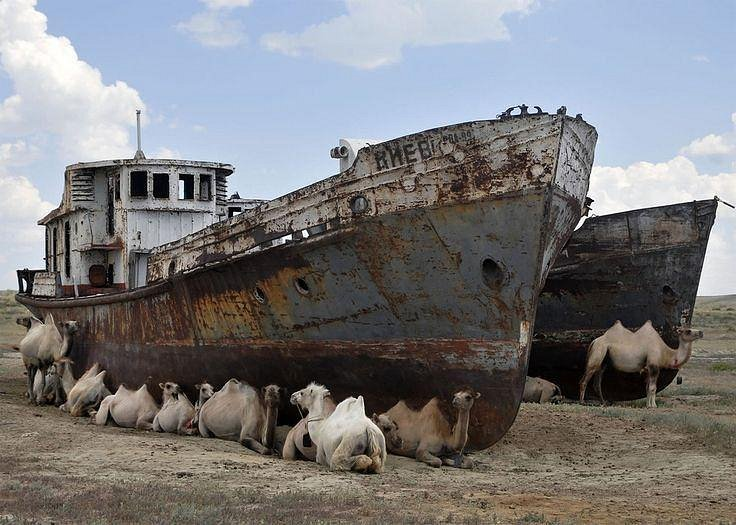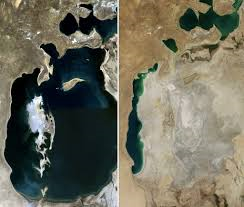THE ARAL SEA’S TRAGIC FATE

Hello, my name is Muslima, and I am from the beautiful and unique Uzbekistan. For those who have not heard about Uzbekistan, I will tell you briefly:
The Republic of Uzbekistan gained independence as a result of the collapse of the USSR in 1991, but despite this, Uzbekistan is a wonderful country with its ancient history, traditions, and world-famous scientists, but my story today is not about that. Today I want to tell you about the sad fate of the sea, which is located in my country.
Once upon a time, there was a sea whose water was blue, transparent, wavy, and rich in fish. It was a source of life for many plants and animals. But as a result of the irresponsibility and carelessness of people, the water in it dried up, and only a third remained. The name of this unfortunate sea is the Aral Sea.

In the last century, the Soviet state, intending to turn my country into a large cotton plantation, inefficiently used natural resources, including water. As a result, the volume of water entering the Aral Sea decreased, and since the 1960s, it has begun to dry up. As a result of this ecological tragedy, many fish, animal, and plant worlds were destroyed. The salt that appeared on the site of the dried-up sea is carried away by the wind, causing damage to the environment and the atmosphere. In recent years, respiratory diseases have increased among the population (I think this is the reason for my allergic rhinitis). These salts melt even the snow on the peaks of the Pamirs and Tien Shan and destroy the country’s climate.
Today, the preservation of the Aral Sea has risen to the level of state policy. Attracting the attention of many international organizations, several foundations have been created, but no matter how difficult it may be, we must admit the truth: it is impossible to return the Aral Sea to its former state. Nevertheless, our state and international organizations are doing a number of things to reduce the damage from this environmental disaster. To be more specific, saxauls are planted in the dry part of the sea. I will explain why it is the Saxauls.
Firstly, saxaul is resistant to drought (I think everyone understood that). Saxaul (English Haloxylon) is a plant that, if it grows large, will retain 90% of the sand and will multiply by itself. In addition, it softens the ecosystem and provides food to many animals. In other words, there is no analogue of this type of saxaulization in the world. In addition to the saxaul, other drought-resistant trees are planted. This is the beginning of the second life of the Aral Sea, but this time not as a “sea,” but as a “forest.”
What I want to say to my peers who read my story is: Always be ready to answer for the result of each decision made and draw the right conclusions from the mistakes made in history.
PS: If we protect nature, nature will protect us.

